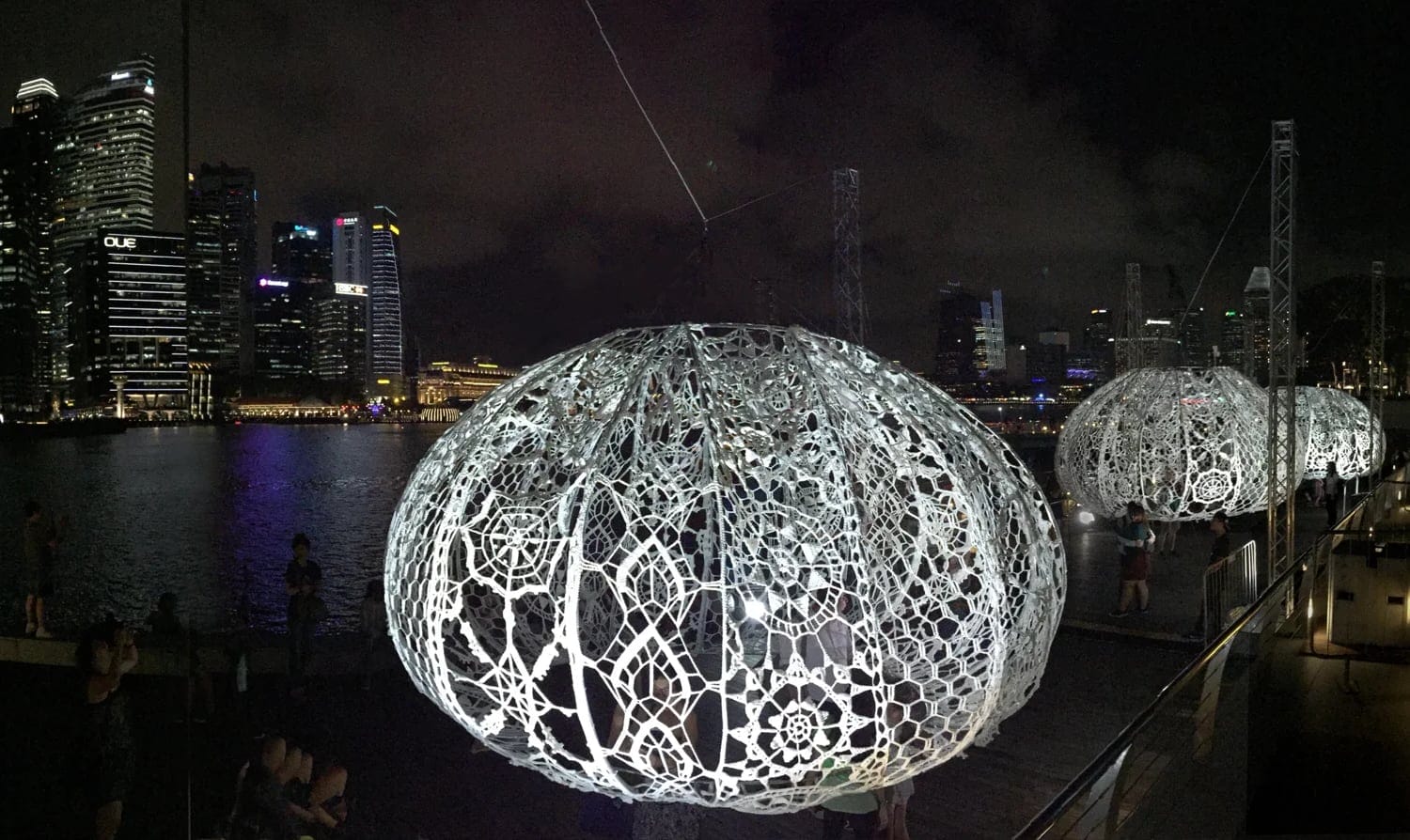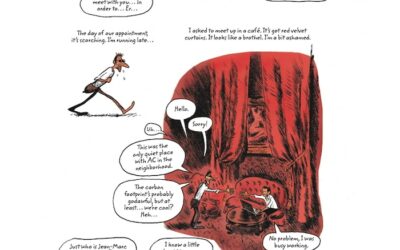This post was originally published on Colossal
“The Urchins,” Marina Bay, Singapore. All images © Choi + Shine Architects, shared with permission
Whether working in Scottsdale, Arizona, or Fukuoka City, Japan, Jin Choi and Thomas Shine have found that crochet is a universal language. The pair engage communities around the world in large-scale projects that involve crafting elaborate lace patterns to be fastened to an iron armature. Both delicate and monumental, the finished works emerge from hundreds of hands and even more hours of labor, all bound together by shared making.
Choi and Shine are formally trained as architects and came to community art partly out of necessity. They had been crocheting immense installations, which was demanding, and when they had an offer for help, they decided to take it. The duo quickly realized the joy of bringing people together to work collectively, and soon, finding local groups to create with became a mainstay of their practice. “It’s really emotional to see how people get together from all these different backgrounds, different walks of life, and become friends, you know?” Choi tells Colossal. “It’s amazing how it creates a real community and sense of ownership in such a short time.”
When working on a commission, Shine determines the structural components, while Choi designs the motif, often referencing 16th-century lace designs and responding to the space. She creates patterns for what are known as “granny squares,” pieces of fabric made by crocheting from the central point outward, that are passed on to volunteers based on their skill levels to make during workshops. Many come to the artists with prior experience, but other times, Choi coaches first-time crocheters through the process, offering tips and feedback along the way.

Detail of “The Urchins,” Marina Bay, Singapore
The artists have countless stories of joy and camaraderie inspired by the workshops, whether it be forging unlikely bonds across cultural divides or offering gratitude to mothers and those not often thanked for their contributions. “The human connection is so much more powerful than going to a museum, looking at a piece of art, and deciding if you’re supposed to like it or not, or what it means. It’s sort of a team sport or any team effort. It becomes bigger than the individual and much more fun than just making,” Shine says.
At the moment, the pair are in Barcelona collaborating with hundreds of crocheters on a piece to be presented at Manifesta 15 in September. Equipped with 70 miles of marine-grade cord, they will create a new iteration of “The Urchins,” bulbous sculptures that cast intricate shadows on the surrounding area in the sunlight.
Like other projects, the pattern in Barcelona is a tribute to local heritage and working-class, minority women who have long been overlooked. “Lace itself is very feminine, but it has this sort of misguided look of flimsiness. It looks like it’s going to be very weak,” Choi says. “But it’s made out of this polyester, UV-resistant, unbelievably strong cord. Every part of it is crocheted so it’s very, very strong.”
Keep up with Choi and Shine’s collaborative projects on Instagram.

“The Lace,” Amsterdam

“The Power of One,” Sharjah

“ARIZONA!,” Scottsdale, Arizona

Detail of “The Power of One,” Fukuoka

“The Power of One,” Fukuoka
Do stories and artists like this matter to you? Become a Colossal Member today and support independent arts publishing for as little as $5 per month. The article Choi + Shine Architects Collaborate with Communities Around the Globe to Crochet Monumental Lace Works appeared first on Colossal.





0 Comments